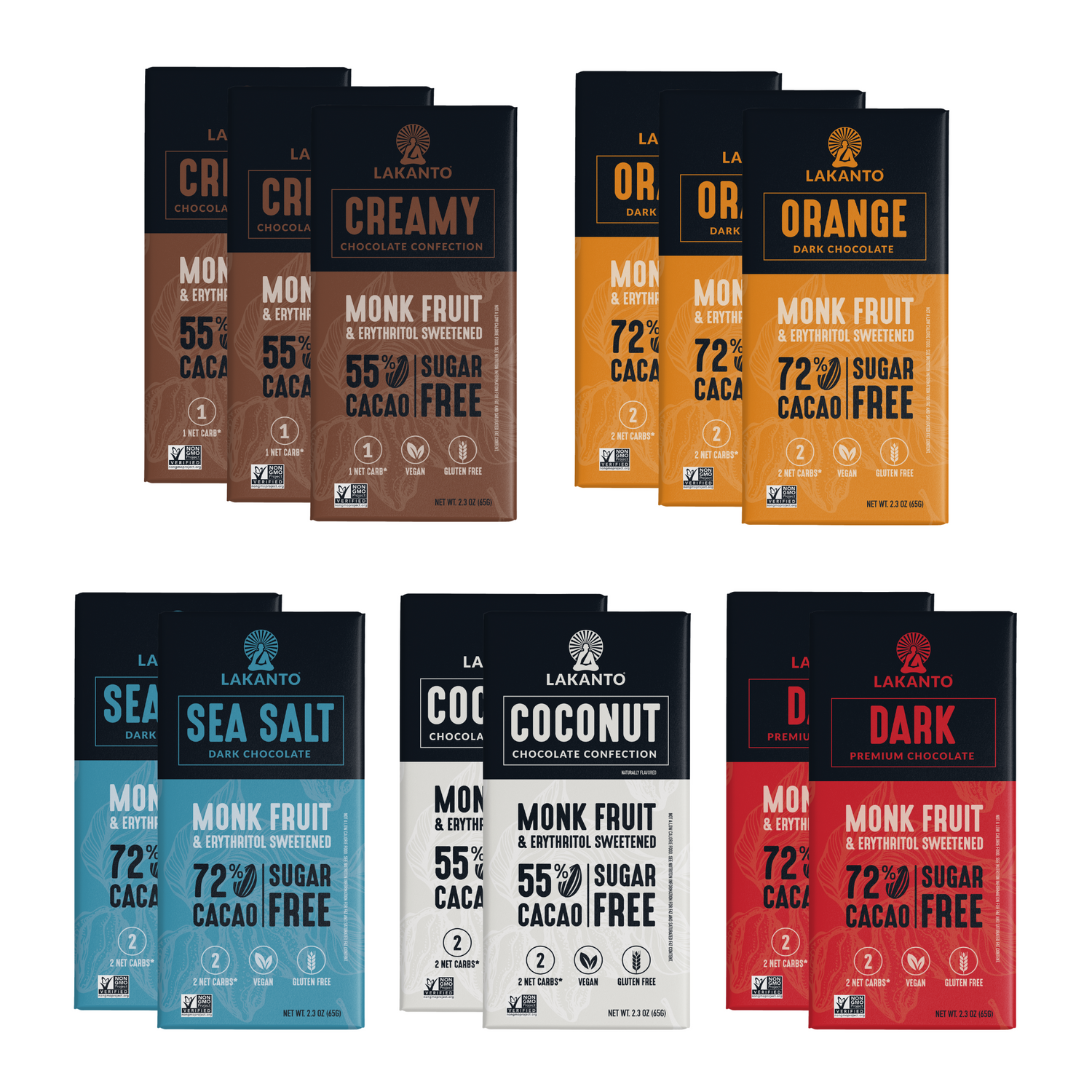Lakanto Golden Monkfruit Sweetener is the perfect alternative sweetener to use in baking! It's generally a one-to-one substitute for sugar, with the texture of raw cane sugar. While it has the same sweetness of our Classic Monkfruit Sweetener, the taste is slightly mapley.
Looks like: raw cane sugar
Tastes like: raw cane sugar
We asked Vanessa Musi, a master chef and expert at healthy baking, how to use Lakanto Golden Monkfruit Sweetener in baked goods.
What Lakanto Golden Sweetener is often used for:
- Baked goods
- Chocolate chip cookies
- Snickerdoodles
- Cinnamon rolls
- Scones
- Brownies
- Sweetening coffee or tea
What does Golden Monkfruit Sweetener taste like?
Compared to Lakanto’s other monk fruit sweeteners, Lakanto Golden Monkfruit Sweetener has a slight maple or caramel flavor. Because of its rich flavor, some people like to use it as a substitute for raw cane sugar and sometimes even brown sugar. However, if you haven't heard, our newest product is Lakanto Brown Sweetener! It more closely resembles brown sugar in texture and baking, wheres Lakanto Golden Monkfruit Sweetener replaces raw cane sugar.
What is the texture of Lakanto Golden Monkfruit Sweetener?
It has slightly larger crystals which make its texture more similar to raw cane sugar.
How much should I substitute for raw cane sugar?
In baking, it's good to generally start with a ratio of 1:1, substituting 1 cup of raw cane sugar with a 1 cup of Lakanto Golden Monkfruit Sweetener.
How do I avoid crystallization of the sweetener in baked goods?
Lakanto Golden Monkfruit Sweetener works best in recipes with a liquid ingredient to make sure the sweetener fully dissolves. Try adding the sweetener directly to the liquid ingredients like butter or oil—mixing the sweetener with liquids will help dissolve the Lakanto Golden Monkfruit Sweetener.
Another great tip to avoid crystallization is avoiding quick extreme temperature changes. For example, if Lakanto Monkfruit Sweetener is heated in a pan on the stovetop with other ingredients, let it cool down to room temperature naturally before the final recipe is placed into the refrigerator.
Flours that work well with Lakanto Golden Monkfruit Sweetener
- Try flours with more moisture.
- Almond flour
- Arrowroot flour
- Tapioca flour
- Flaxseed flour
- Spelt flour
- Cassava flour
Lakanto Golden Monkfruit Sweetener works best in recipes with some moisture to help the sweetener fully dissolve. For a dry flour such as coconut flour, make sure the recipe has an ingredient with liquid or moisture—butter, oil, coconut cream, whipping cream, or almond milk can help balance out a drier flour.
Why are monk fruit sweeteners better than other sweeteners?
Lakanto Golden Monkfruit Sweetener shares many of the health benefits of monk fruit. Monk fruit sweeteners do not have the same negative side effects like aspartame or Splenda (sucralose).
Can I use Lakanto Golden Monkfruit Sweetener to replace maple syrup or honey?
Yes! Since it has a richer maple-like taste, Lakanto Golden Monkfruit Sweetener is a great substitute for maple syrup or honey. Make sure to compensate for the loss of the liquid ingredient by adding some water along with the Lakanto Golden Monkfruit Sweetener. Try replacing 1 cup maple syrup/honey with ¾ cup Lakanto Golden Monkfruit Sweetener and ¼ cup water.
Lakanto Golden Monkfruit Sweetener is a convenient substitute for raw cane sugar in your baked recipes! Try it in place of raw cane sugar, maple syrup, or honey for great results. Lakanto Golden Monkfruit Sweetener isn’t just for baked goods—you can even try it with your coffee or tea to add some sweetness without negative side effects or a funny aftertaste.
Wanna know more about baking with Lakanto Monkfruit Sweeteners?
Click here for a free guide and recipe book that will guide you through baking with Lakanto Monkfruit Sweeteners.



